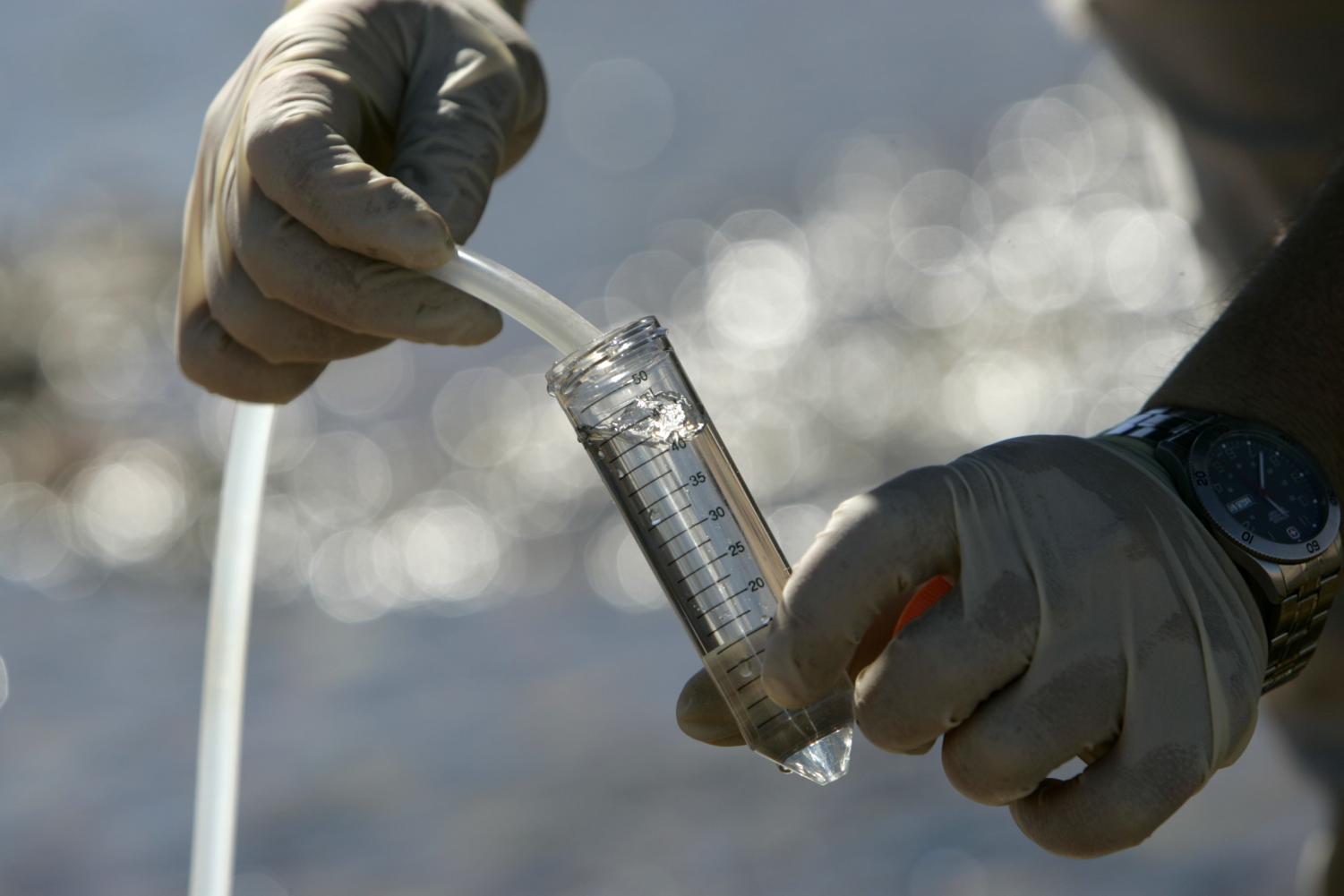SANTA CRUZ, CA– Test it, study it, figure out how to clean it– but still drink it. That is the range of reactions raining down from community leaders, utilities, environmental groups and policy makers in reaction to an Associated Press investigation that documented the presence of pharmaceuticals in major portions of the nation’s drinking water supplies.
”There is no wisdom in avoidance. There is wisdom in addressing this problem. I’m not suggesting that people be hysterical and overreact. There’s a responsible way to deal with this– and collectively we can do it,” said Washington-based environmental lawyer George Mannina.
A five-month-long inquiry by the AP National Investigative Team found that many communities do not test for the presence of drugs in drinking water, and those that do often fail to tell customers that they have found trace amounts of medications, including antibiotics, anti-convulsants, mood stabilizers and sex hormones. The stories also detailed the growing concerns among scientists that such pollution is adversely affecting wildlife and may be threatening human health.
As a result, Senate hearings have been scheduled, and there have been calls for federal solutions. But officials in many cities say they are not going to wait for guidance from Washington to begin testing.
Pharmaceutical industry officials said they would launch a new initiative Monday with the U.S. Fish and Wildlife Service focused on telling Americans how to safely dispose of unused medicines.
The subject of pharmaceuticals in drinking water also will be discussed this week when 7,000 scientists and regulators from 45 countries gather in Seattle for the annual meeting of the Society of Toxicology. ”The public has a right to know the answers to these questions,” said Dr. George Corcoran, the organization’s president.
”The AP story has really put the spotlight on it, and it is going to lead to a pickup in the pace,” he said. ”People are going to start putting money into studying this now, instead of a few years from now, and we’ll get the answers sooner than we would have otherwise.”
Environmental leaders said some answers are easy.
”It’s basic. We need to test, tell and protect health,” said Richard Wiles, executive director of the Washington-based Environmental Working Group.
Wiles said the Environmental Protection Agency needs to widely expand the list of contaminants that utilities are required to test for. That list currently contains no pharmaceuticals. He also said government agencies and water providers that don’t disclose test results ”are taking away people’s right to know, hiding the fact that there are contaminants in the water. We don’t think they have that right. It’s hubris, it’s arrogance and it’s self-serving,” said Wiles.
As part of its effort, the AP surveyed 62 metropolitan areas and 52 smaller cities, reporting on positive test results in 24 major cities, serving 41 million Americans. Since release of the AP investigation, other communities and researchers have been disclosing previously unreleased local results, positive or negative.
In Yuma, Arizona, for example, city spokesman Dave Nash said four pharmaceuticals –an antibiotic, an anti-convulsant, an anti-bacterial and caffeine– have been detected in that city’s drinking water. In Denver, where the AP had reported undisclosed antibiotics had been detected, a Colorado State University professor involved in water screening there e-mailed the names of 12 specific drugs that had been detected.
Officials at many utilities said that without federal regulations, they did not see a need to screen their water for trace amounts of pharmaceuticals. But others have now decided to test, including Scottsdale and Phoenix in Arizona, Palm Beach County in Florida, Chicago and Springfield, Illinois, Bozeman, Montana, Fargo, North Dakota; Danville, Virginia; and a group of four sewer partners in the Olympia, Washington, region.
”We read the AP story and made a determination that we should test our water and be transparent, just let the people know what we find. I’m confident we have safe and clean drinking water,” said Phoenix Mayor Phil Gordon.
Officials in Freeport, Illinois, one of the smaller cities surveyed, said they plan to work with the state EPA to test the area’s drinking water for pharmaceuticals. Mayor George Gaulrapp said he is looking to the state agency for standards, regulations and testing procedures for that city’s water, which comes from a deep well.
In some places, residents learned that the rivers and lakes that feed their drinking water treatment plants have already been tested, or that tests are under way.
In Marin County, California, officials said repeated tests in their watershed for pharmaceuticals have come back clean. In Massachusetts, the state Department of Environmental Protection announced a program to screen rivers, streams and reservoirs for pharmaceuticals.
Dozens of newspaper editorials called for testing in communities where water is not being screened and the release of any test results.
”The first, and least expensive, step is to let the sunshine in: Water utilities that currently test for pharmaceuticals should make that information freely available to their customers, along with more information on the potential impacts of drugs in the water supply,” read an editorial in the Daytona Beach News-Journal in Florida.
The Fort Worth Star-Telegram in Texas has filed an open records request for a copy of a study conducted on the city’s water after the mayor refused to give the AP and the newspaper the name of a pharmaceutical detected in the drinking water. City officials say publishing that information could jeopardize public safety, citing post-Sept. 11 security concerns. A Texas attorney general’s opinion is being sought on possible release of the information.
The Milwaukee Journal Sentinel in Wisconsin urged readers to take responsibility as well.
”It’s a problem in which the average person has both a stake and a role in the solution,” read a Journal Sentinel editorial. ”He or she can do something as simple as not flushing unused medications down the toilet or into the drain.”
And the Pittsburgh Post-Gazette in Pennysylvania observed that ”given the national scope of the problem, a strong leadership role for the federal government suggests itself in areas such as testing and upgrading water treatment plants. So it is discouraging to note that the Bush administration in its 2009 budget proposal cut $10 million (6.4 million) from the water monitoring and research program.”
While the local responses are encouraging, Lisa Rainwater, policy director of Riverkeeper, a New York-based environmental group, said the EPA should step aside and let the National Academy of Sciences or the General Accounting Office study the impacts on humans and wildlife.
”Frankly, the EPA has failed the American public for doing far too little for far too long,” she said.
At least one local water official is putting part of his faith in another quarter. Wayne Livingston of the Oxford Water Works in Alabama said he has confidence in the existing treatment system. But he said his agency probably will test for pharmaceuticals now, although he doubts anything will turn up because the water is pumped from underground.
”The good Lord filters it,” he said. ”But this is something we should keep an eye on.”







